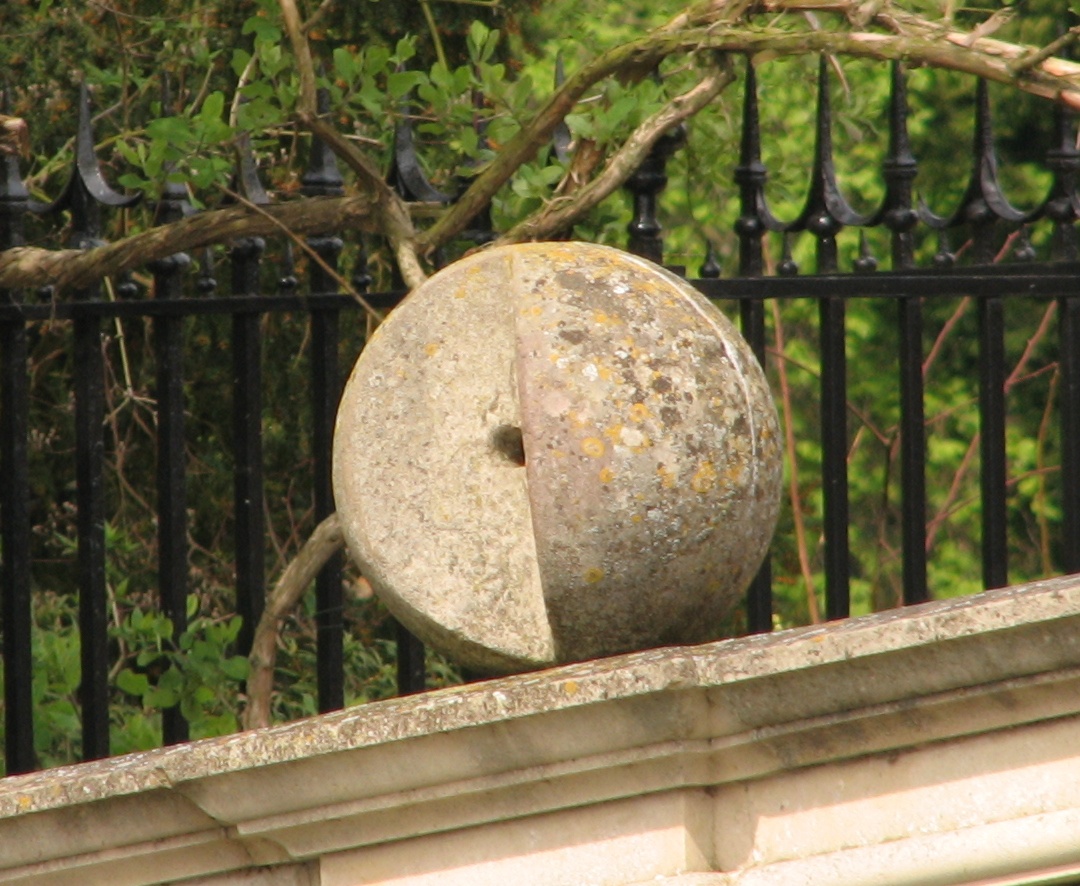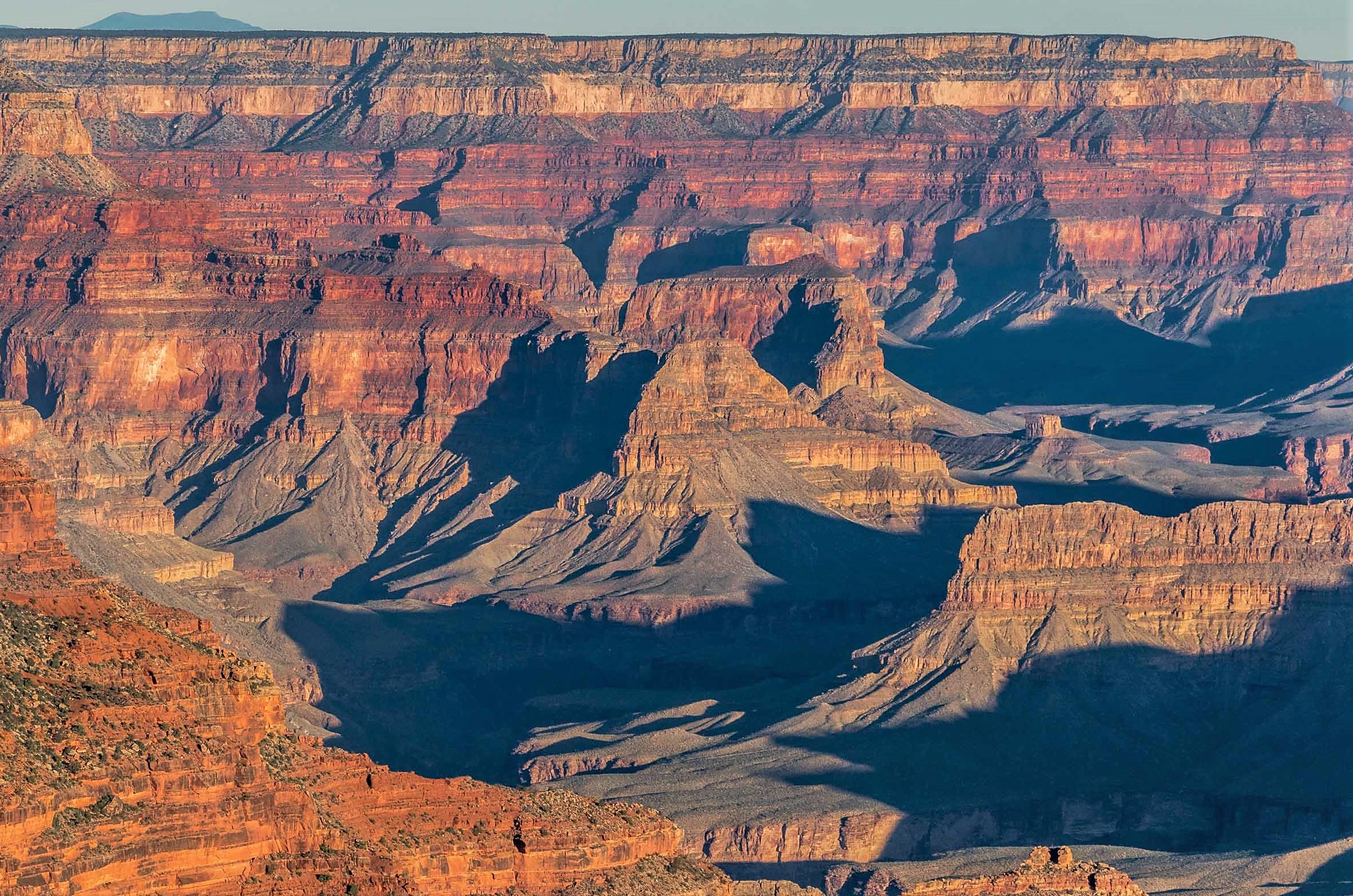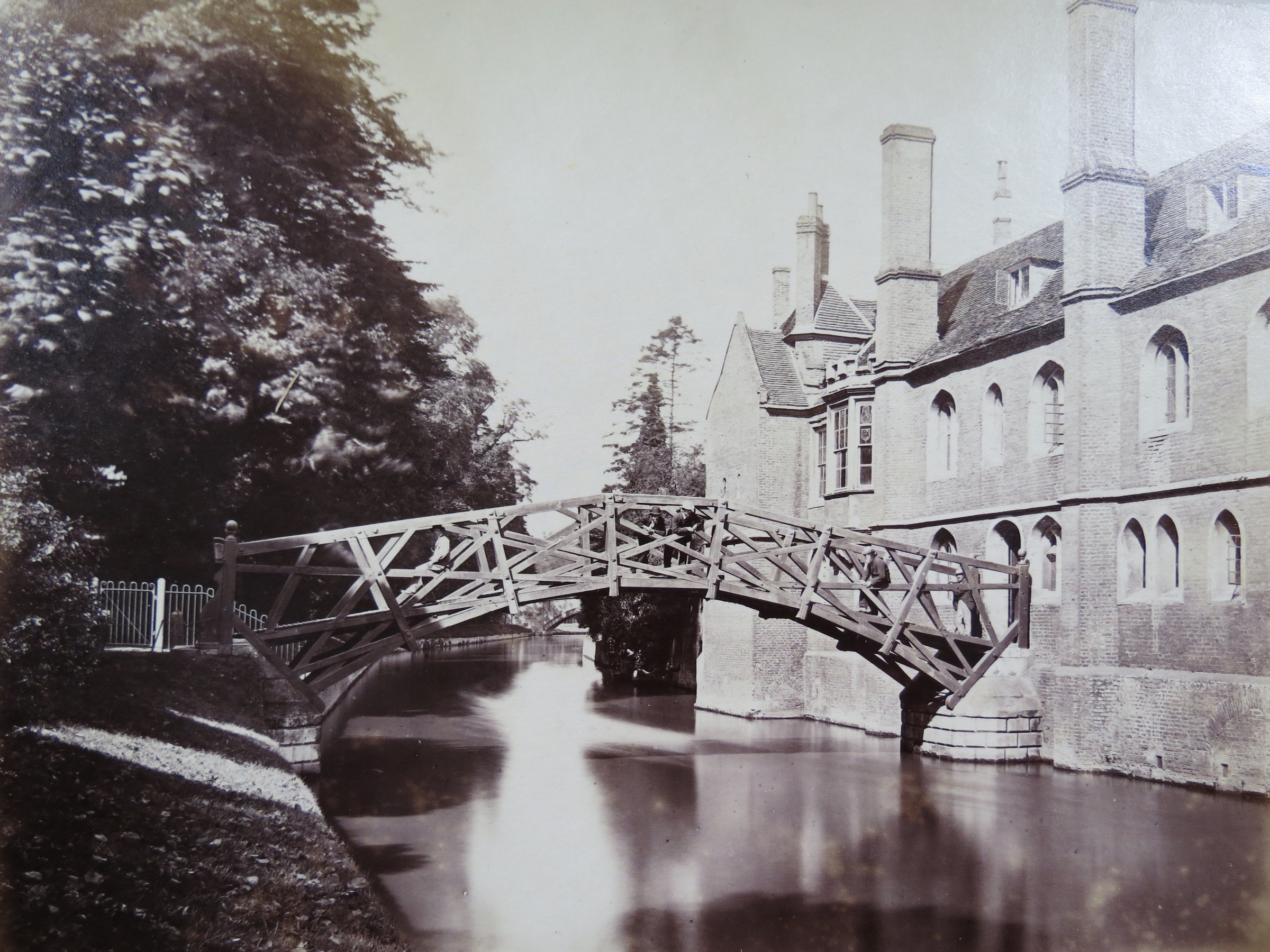|
Clare College Bridge, Cambridge
Clare Bridge is the ninth bridge overall and the fifth River Cam bridge on its middle stream in Cambridge. The bridge now connects the Old Court of Clare College to Memorial Court, which was dedicated in 1926. It is a Grade I listed building. It is the oldest still-functioning bridge in Cambridge, built in 1639-40 by Thomas Grumbold (d.1659). It is one of two bridges left standing by the Parliamentarian forces in the English Civil War (the other being the Great Bridge) when Cromwell used stone from other bridges to refortify Cambridge Castle. It was restored in 1969. It is a three-span bridge in Early Renaissance style, built of Ketton stone ashlar. The balustrade has carved relief panels on the pedestals and is surmounted by ball finials. One of the fourteen stone balls has a missing section. Many different tales are told to explain the missing section of the globe second from the left on the south side of the bridge. The story most commonly cited by members of college is ... [...More Info...] [...Related Items...] OR: [Wikipedia] [Google] [Baidu] |
River Cam
The River Cam () is the main river flowing through Cambridge in eastern England. After leaving Cambridge, it flows north and east before joining the River Great Ouse to the south of Ely, at Pope's Corner. The total distance from Cambridge to the sea is about and is navigable for punts, small boats, and rowing craft. The Great Ouse also connects to England's canal system via the Middle Level Navigations and the River Nene. In total, the Cam runs for around from its furthest source (near Debden in Essex) to its confluence with the Great Ouse. Name The original name of the river was the ''Granta'' and (unusually) its present name derives from the city of Cambridge ( ang, Grantebrycge) rather than the other way around: After the city's present name developed in Middle English, the river's name was backformed to match. This was not universally applied, however, and the upper stretch of the river continues to be informally known as the Granta. It has been said''Bedders, Bulldo ... [...More Info...] [...Related Items...] OR: [Wikipedia] [Google] [Baidu] |
Stone Bridges In England
In geology, rock (or stone) is any naturally occurring solid mass or aggregate of minerals or mineraloid matter. It is categorized by the minerals included, its chemical composition, and the way in which it is formed. Rocks form the Earth's outer solid layer, the crust, and most of its interior, except for the liquid outer core and pockets of magma in the asthenosphere. The study of rocks involves multiple subdisciplines of geology, including petrology and mineralogy. It may be limited to rocks found on Earth, or it may include planetary geology that studies the rocks of other celestial objects. Rocks are usually grouped into three main groups: igneous rocks, sedimentary rocks and metamorphic rocks. Igneous rocks are formed when magma cools in the Earth's crust, or lava cools on the ground surface or the seabed. Sedimentary rocks are formed by diagenesis and lithification of sediments, which in turn are formed by the weathering, transport, and deposition of existing rocks. ... [...More Info...] [...Related Items...] OR: [Wikipedia] [Google] [Baidu] |
Pedestrian Bridges In England
A pedestrian is a person traveling on foot, whether walking or running. In modern times, the term usually refers to someone walking on a road or pavement, but this was not the case historically. The meaning of pedestrian is displayed with the morphemes ''ped-'' ('foot') and ''-ian'' ('characteristic of'). This word is derived from the Latin term ''pedester'' ('going on foot') and was first used (in English language) during the 18th century. It was originally used, and can still be used today, as an adjective meaning plain or dull. However, in this article it takes on its noun form and refers to someone who walks. The word pedestrian may have been used in middle French in the Recueil des Croniques et Anchiennes Istories de la Grant Bretaigne, à présent nommé Engleterre. In California the definition of a pedestrian has been broadened to include anyone on any human powered vehicle that is not a bicycle, as well as people operating self-propelled wheelchairs by reason of ph ... [...More Info...] [...Related Items...] OR: [Wikipedia] [Google] [Baidu] |
Bridges Across The River Cam
A bridge is a structure built to span a physical obstacle (such as a body of water, valley, road, or rail) without blocking the way underneath. It is constructed for the purpose of providing passage over the obstacle, which is usually something that is otherwise difficult or impossible to cross. There are many different designs of bridges, each serving a particular purpose and applicable to different situations. Designs of bridges vary depending on factors such as the function of the bridge, the nature of the terrain where the bridge is constructed and anchored, and the material used to make it, and the funds available to build it. The earliest bridges were likely made with fallen trees and stepping stones. The Neolithic people built boardwalk bridges across marshland. The Arkadiko Bridge (dating from the 13th century BC, in the Peloponnese) is one of the oldest arch bridges still in existence and use. Etymology The ''Oxford English Dictionary'' traces the origin of the wo ... [...More Info...] [...Related Items...] OR: [Wikipedia] [Google] [Baidu] |
Bridges In Cambridge
The following is a list and brief history of the bridges in Cambridge, England, principally those over the River Cam of which there are 25, soon to be 26. The River Cam enters Cambridge from the south west of the city and heads north past many of the historic colleges of the University of Cambridge along the open area known as The Backs. After passing St John's College, it turns sharply and runs east, passing the weir at Jesus Green and the boathouses alongside Midsummer Common. Passing Chesterton, it turns north again and leaves the city, running a further before merging with the Great Ouse at Pope's Corner to the south of Ely. Bridges over the River Cam (south to north) Upper River (upstream of mill pond weir) Trumpington Bridge (1790) The most upstream bridge in Cambridge (UK Parliament constituency) lies along Grantchester Road between Grantchester and Trumpington. Also known as Brasel Bridge, this 1790 brick bridge replaced a wooden bridge at the site of a ford. ... [...More Info...] [...Related Items...] OR: [Wikipedia] [Google] [Baidu] |
River Cam Map
A river is a natural flowing watercourse, usually freshwater, flowing towards an ocean, sea, lake or another river. In some cases, a river flows into the ground and becomes dry at the end of its course without reaching another body of water. Small rivers can be referred to using names such as creek, brook, rivulet, and rill. There are no official definitions for the generic term river as applied to geographic features, although in some countries or communities a stream is defined by its size. Many names for small rivers are specific to geographic location; examples are "run" in some parts of the United States, "burn" in Scotland and northeast England, and "beck" in northern England. Sometimes a river is defined as being larger than a creek, but not always: the language is vague. Rivers are part of the water cycle. Water generally collects in a river from precipitation through a drainage basin from surface runoff and other sources such as groundwater recharge, springs, a ... [...More Info...] [...Related Items...] OR: [Wikipedia] [Google] [Baidu] |
List Of Bridges In Cambridge
The following is a list and brief history of the bridges in Cambridge, England, principally those over the River Cam of which there are 25, soon to be 26. The River Cam enters Cambridge from the south west of the city and heads north past many of the historic colleges of the University of Cambridge along the open area known as The Backs. After passing St John's College, it turns sharply and runs east, passing the weir at Jesus Green and the boathouses alongside Midsummer Common. Passing Chesterton, it turns north again and leaves the city, running a further before merging with the Great Ouse at Pope's Corner to the south of Ely. Bridges over the River Cam (south to north) Upper River (upstream of mill pond weir) Trumpington Bridge (1790) The most upstream bridge in Cambridge (UK Parliament constituency) lies along Grantchester Road between Grantchester and Trumpington. Also known as Brasel Bridge, this 1790 brick bridge replaced a wooden bridge at the site of a ford ... [...More Info...] [...Related Items...] OR: [Wikipedia] [Google] [Baidu] |
Cambridge University, Clare College
Cambridge ( ) is a university city and the county town in Cambridgeshire, England. It is located on the River Cam approximately north of London. As of the 2021 United Kingdom census, the population of Cambridge was 145,700. Cambridge became an important trading centre during the Roman and Viking ages, and there is archaeological evidence of settlement in the area as early as the Bronze Age. The first town charters were granted in the 12th century, although modern city status was not officially conferred until 1951. The city is most famous as the home of the University of Cambridge, which was founded in 1209 and consistently ranks among the best universities in the world. The buildings of the university include King's College Chapel, Cavendish Laboratory, and the Cambridge University Library, one of the largest legal deposit libraries in the world. The city's skyline is dominated by several college buildings, along with the spire of the Our Lady and the English Martyrs Chu ... [...More Info...] [...Related Items...] OR: [Wikipedia] [Google] [Baidu] |
Clare Bridge - Ball With Missing Wedge
Clare may refer to: Places Antarctica * Clare Range, a mountain range in Victoria Land Australia * Clare, South Australia, a town in the Clare Valley * Clare Valley, South Australia Canada * Clare (electoral district), an electoral district * Clare, Nova Scotia, a municipal district Republic of Ireland * County Clare, one of the 32 counties of Ireland * Clare, County Westmeath, a townland in Killare civil parish, barony of Rathconrath * Clare Island, County Mayo * Clarecastle, a village in County Clare * Clare (Dáil constituency) (since 1921) * Clare (UK Parliament constituency) (1801–1885) * Clare (Parliament of Ireland constituency) (until 1800) * River Clare, County Galway South Africa *Clare, Mpumalanga, a town in Mpumalanga province United Kingdom * Clare, County Antrim, a townland in County Antrim, Northern Ireland * Clare (Ballymore), a townland in County Armagh, Northern Ireland * Clare, County Down, a townland in County Down, Northern Ireland * Clare, County ... [...More Info...] [...Related Items...] OR: [Wikipedia] [Google] [Baidu] |
Balustrade
A baluster is an upright support, often a vertical moulded shaft, square, or lathe-turned form found in stairways, parapets, and other architectural features. In furniture construction it is known as a spindle. Common materials used in its construction are wood, stone, and less frequently metal and ceramic. A group of balusters supporting a handrail, coping, or ornamental detail are known as a balustrade. The term baluster shaft is used to describe forms such as a candlestick, upright furniture support, and the stem of a brass chandelier. The term banister (also bannister) refers to a baluster or to the system of balusters and handrail of a stairway. It may be used to include its supporting structures, such as a supporting newel post. Etymology According to the ''Oxford English Dictionary'', "baluster" is derived through the french: balustre, from it, balaustro, from ''balaustra'', "pomegranate flower" rom a resemblance to the swelling form of the half-open flower (' ... [...More Info...] [...Related Items...] OR: [Wikipedia] [Google] [Baidu] |
Renaissance Architecture
Renaissance architecture is the European architecture of the period between the early 15th and early 16th centuries in different regions, demonstrating a conscious revival and development of certain elements of ancient Greek and Roman thought and material culture. Stylistically, Renaissance architecture followed Gothic architecture and was succeeded by Baroque architecture. Developed first in Florence, with Filippo Brunelleschi as one of its innovators, the Renaissance style quickly spread to other Italian cities. The style was carried to Spain, France, Germany, England, Russia and other parts of Europe at different dates and with varying degrees of impact. Renaissance style places emphasis on symmetry, proportion, geometry and the regularity of parts, as demonstrated in the architecture of classical antiquity and in particular ancient Roman architecture, of which many examples remained. Orderly arrangements of columns, pilasters and lintels, as well as the use of semici ... [...More Info...] [...Related Items...] OR: [Wikipedia] [Google] [Baidu] |






